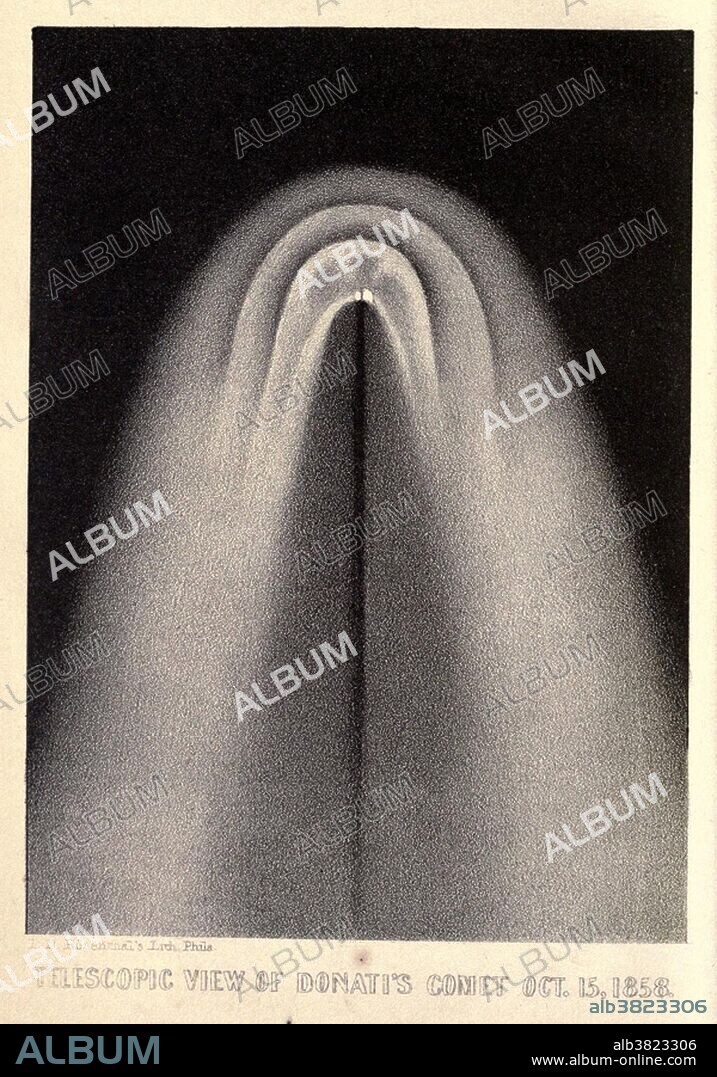alb3823306
Comet Donati, 1858

|
Add to another lightbox |
|
Add to another lightbox |



Title:
Comet Donati, 1858
Caption:
Comet Donati, or Donati's Comet, formally designated C/1858 L1 and 1858 VI, is a long-period comet named after the Italian astronomer Giovanni Battista Donati who first observed it on June 2, 1858. After the Great Comet of 1811, it was the most brilliant comet that appeared in the 19th century. It was also the first comet to be photographed. It was nearest the Earth on October 10, 1858. A comet is an icy small Solar System body that, when passing close to the Sun, heats up and begins to outgas, displaying a visible atmosphere or coma, and sometimes also a tail. These phenomena are due to the effects of solar radiation and the solar wind upon the nucleus of the comet. Comets have been observed and recorded since ancient times by many different cultures. Comets have a wide range of orbital periods, ranging from several years to several millions of years. Image from A Popular Treatise on Comets (1861) by James C. Watson.
Credit:
Album / Science Source
Releases:
Model: No - Property: No
Rights questions?
Rights questions?
Image size:
2730 x 3900 px | 30.5 MB
Print size:
23.1 x 33.0 cm | 9.1 x 13.0 in (300 dpi)
Keywords:
1858 VI • 1858 • 19TH CENTURY • ART • ARTWORK • ASTRONOMICAL • ASTRONOMY • C / 1858 L1 • CELESTIAL BODY • CELESTIAL OBJECT • COMET DONATI • COMET • DONATI'S COMET • DRAWING • GIOVANNI BATTISTA DONATI • HEAVENLY BODY • HISTORIC • HISTORICAL • HISTORY • ILLUSTRATION • LITHOGRAPH • LONG-PERIOD COMET • PDR • PHENOMENA • PHENOMENON • PUBLIC DOMAIN REVIEW • SCIENCE • TELESCOPIC VIEW
 Pinterest
Pinterest Twitter
Twitter Facebook
Facebook Copy link
Copy link Email
Email

